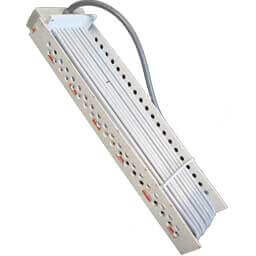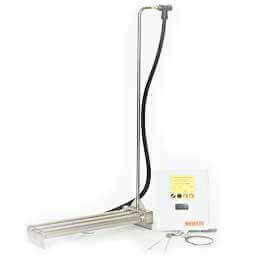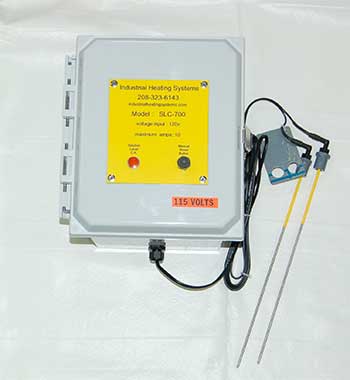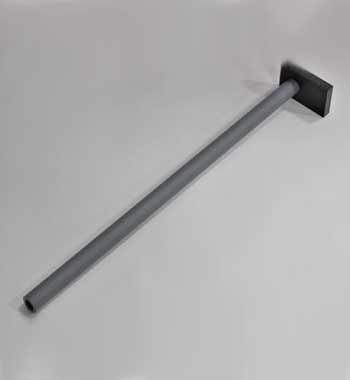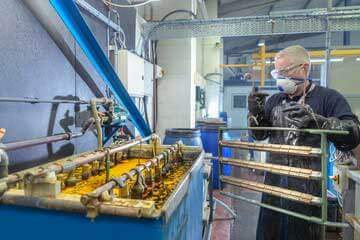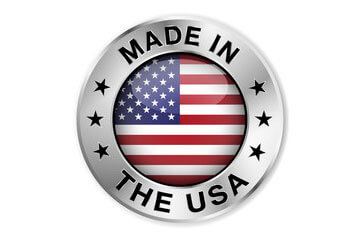🇺🇸USA Mfg heaters! ⭐️ All parts & materials are made in America– ready to ship 🚛
Phosphate Coating Equipment
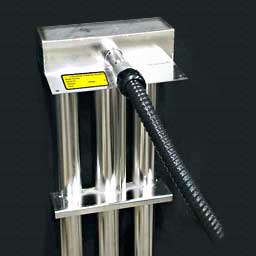
Phosphate coatings are applied to iron or steel parts to increase corrosion resistance. Heating phosphates is difficult, but it's a prerequisite to getting the future coatings to apply. The end result is a superior metal finish.
Phosphate Coating Heaters
We offer 316 stainless steel or Titanium sheath or PTFE coated heaters. If you choose SS, upgrade to electro-polish on the sheath. The Teflon or PTFE immersion heaters are usually preferred to heat phosphate plating tanks.
By de-rating heaters, the wattage is reduced to 20 WSI, rather than the normal heat output of around 35-40 watts per square inch. You want to slow the crystalline buildup process on the heaters. About every 2 weeks, the heaters are removed and cleaned from the tank. The added 6” welded nipple makes it easy to remove and clean on the phosphate heaters for zinc and magnesium.
Because of the high solution evaporation rate, we recommend L-Shaped tank heaters or Bottom heaters with a heat shield, especially for polypro tanks. Learn more about various phosphate coating processes.
All phoshorous coating systems should have a liquid level safety to shut the heaters off in the event of evaporation, tank leakage, or chemical hose failure.

